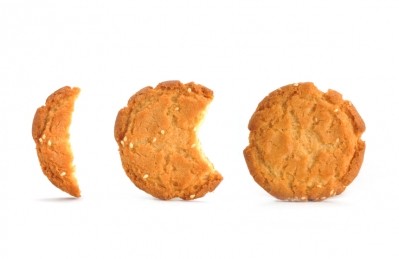In line image analysis can enhance gluten-free biscuit production, study
The authors, who published their findings in the journal, LWT - Food Science and Technology, said an image analysis technique based on a computerized vision system (CVS) tracked changes in the quality parameters and physical properties of corn biscuits during baking in real time.
Colour, crust browning and specific volume of batter is essential to the manufacture of biscuits of good quality, but these properties are rarely measured directly in fermenting batter due to lack of suitable instrumentation, state the researchers.
And they claim that computer vision has previously been used to objectively measure the colour of other foods, such as pizzas, cracker biscuits, and crisps.
The team notes that corn and rice flours are viable alternative to gluten based biscuits but can present proofing challenges for manufacturers and can impart an unusual texture and taste to products, exhibiting a dry crumb that results in poor mouthfeel and poor flavour. Thus measuring structural changes could aid formulation of biscuits based on corn flour.
Method
Batter containing moulds were baked in an electrical static oven under natural convection conditions. Four temperatures were used: 190ºC, 210ºC, 230ºC and 250ºC for a maximum time of 45 minutes, in order to obtain a final comparable surface colour. For kinetic experiments, the corn biscuit samples were baked by increasing time, with a 5 minute time intervals until the final baking time. Oven temperature was measured using T-type thermocouples.
Computer vision system (CVS) was used to evaluate volume expansion variation during corn biscuit samples baking in real time. Images of corn biscuit sample volume were acquired using a digital camera, explained the team. The camera, mounted inside a large box imperious to light, was positioned in front of the glass oven at a distance of 5 cm inside, they added.
The iris and lens aperture was operated in automatic mode and the camera was gray-balanced before each imaging session. Uniform diffuse lighting was used to illuminate the samples in the oven.
To determine the specific volume of the batter as a function of baking time, the researchers said that 137 grams of batter were poured over cylindrical glass moulds and transferred to an oven (at different baking temperatures). The mould was then placed in the proving oven against a black background directly in front of a digital camera affixed to a tripod.
The scientists said that biscuit colour was measured by a computer vision colour system and image analysis as well as with a hand-held colourimeter. In CVCS, colour images of corn biscuit samples were digitized into pixels containing levels of the three primary colours: red, green and blue and converted to CIE Lab values using Photoshop.
Additional quality parameters evaluated were weight loss and firmness of the corn biscuits produced, said the authors.
Results
The method of continuous or in the real time monitoring of corn biscuit vertical expansion used in this experiment was simple, low cost and effective, argue the researchers.
Microscopic observation, they said, revealed that the inner structure (crumb) of the corn biscuit, appear as a continuous sheet of proteins and hydrocolloids with embedded starch granules, which showed both intact and gelatinized granules due the limited water content, where the membrane solidifies without fusing.
Also, in micrography, gelatinized starch granules between 5 and 30 μm in diameter appear to be embedded in the protein network, said the team.
Colour and volume expansion measurements through the CVS system provided "reproducible values of browning and volume changes without invasion of the sample. This paper shows that the matrix structure and its dynamics modifications play a decisive role in determining the kinetics of physico-chemical phenomena," they concluded.
Source: LWT - Food Science and Technology
Published online ahead of print: DOI:10.1016/j.lwt.2010.10.007
Title: Structural and physical modifications of corn biscuits during baking process
Authors: E. Lara, P. Cortés, V. Briones, M. Perez






